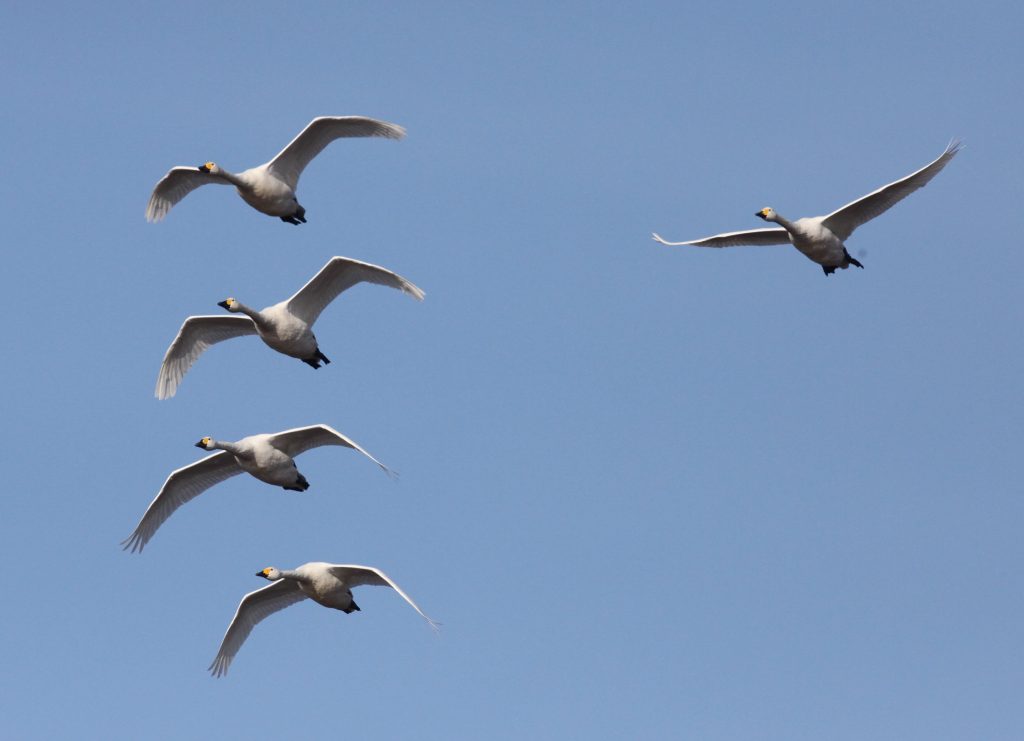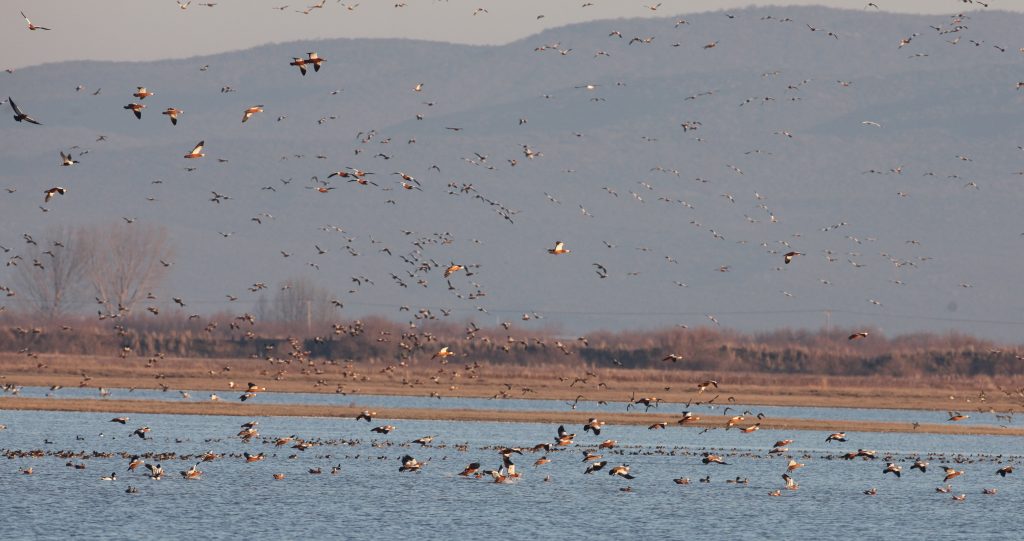5100, 5300, maybe even 6000! That’s the number of Bewick’s Swans counted the last days by the ornithologists working for the Evros Delta National Park. The previous record was set around 4500 individuals seen during the previous winter. The number of Bewick’s Swans wintering in Greece is therefore still growing while at the same time the flocks observed in traditional areas in the area of the North Sea are at their lowest.

This is not an easy task to count the swans in the Evros. Indeed, the Delta is shared between Greece and Turkey, making it difficult to carry out coordinated counts; there is also no local team of ornithologists on the Turkish side. Part of the delta is also under military control and therefore can be visited only occasionally and under strictly controlled conditions. In addition, the area of presence of swans is very large, about 350 square kilometers. Moreover a part of it is inaccessible when the river flow is so important that adjacent areas to the main branch are flooded. Additionally Bewick’s Swans are not the only representatives of their genus to winter in the Evros Delta. It is also the case for thousands of Mute Swans (from the steppe – or ancient steppes – of Ukraine and South of Russia) and Whooper Swans (most likely originating from the taiga of Siberia). The counts are therefore often slow and difficult as it is essential to carefully make the distinction between the three species. But the Greek team is particularly experienced, alternating on its territory and throughout the winter, weekly day counts and every two weeks evening counts at the roosts.
Starting today, and for 10 days, the Greek and Belgian teams are joining their force to study in the Evros the behavior of swans, their distribution between the different lagoons, their demographics by determining the proportion of young and brood size. The aim is also to go to see each site where the Bewick 854X equipped with a GPS transmitter on 14/07/2015 in the tundra of Yamal ( Siberia) has been located since his arrival in the Evros Delta on 12/12/2015. That will give the possibility to accurately determine the habitats used by this ” sentinel swan” and their relative importance. Such data are very useful for the conservation of the species giving the possibility, if necessary, to propose appropriate management measures. The GPS localization of the transmitter was set at 1 hour interval from today. This will provide even more accurate data in the coming days. This procedure will be limited in time because it is obviously energy costly and could drain the solar battery.
The sun is shining in the Evros today. Daytime temperature ranges between 10-15 °C. It turns out that almost all Bewick’s Swans left Greece to forage in Turkey. Moreover it has appeared that they didn’t came back on the Greeks roosting places before sunset. We have counted barely 150 individuals arriving at roost before darkness. But the evening was not lost! At 16:48 and then at 17:11 it is in a deafening roar that two compact waves totaling 4500 Ruddy Shelducks have arrived at the same marsh just south of Drana lagoon. This happens in the Evros Delta, and at European level, only in the Evros Delta!

Go up tomorrow at 6:30, before sunrise, to see if the swans were indeed coming to sleep to Greece and to count them, if possible. And perhaps also to observe 854X!
